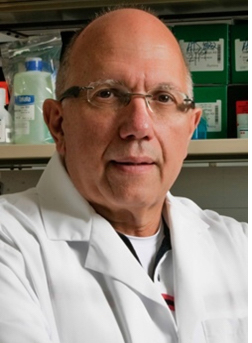The big news out of CROI (Conference on Retroviruses and Opportunistic Infections) was a report of a third person being cured of HIV infection, this time using umbilical cord blood for a hematopoetic stem cell transplant. Emory’s Carlos del Rio gave a nice overview of the achievement for NPR this morning.
As del Rio explains, the field of HIV cure research took off over the last decade after Timothy Brown, known as “the Berlin patient,” was cured after receiving a stem cell transplant for acute myeloid leukemia. His transplant donor had a mutation that made incoming blood and immune cells resistant to HIV infection.
For several reasons – safety, expense, and lack of immune compatibility — it is not practical to do hematopoetic stem cell transplants for everyone infected with HIV. Such transplants, which replace the cells that generate blood and immune cells, pose considerable risk.
“This is not a scaleable intervention,” del Rio told interviewer Leila Fadel. “This is very fascinating science, very cool science that will advance the field of HIV research, but this is also a very rare phenomenon.”
The transplant option comes into consideration when someone living with HIV is diagnosed with leukemia or lymphoma. But the CCR5 delta32 mutation that makes donor cells HIV-resistant is rare and found mainly in people of Northern European descent, and the process of finding a match has limitations. People of color are under-represented in registries for matching donors and recipients.
Using more malleable umbilical cord blood as a source for stem cell transplant may allow the approach to be offered to a larger group of people, including more people of color. Emory’s Vince Marconi told WebMD that cord blood could also allow patients to undergo a less grueling experience.
During the COVID-19 pandemic, the CROI conference has morphed into a premier immunology meeting, including presentations on COVID-19 and SARS-CoV-2, as well as HIV and viral hepatitis. As usual, Emory/Yerkes scientists had a strong presence at CROI.
In particular, researchers such as Mirko Paiardini and Ann Chahroudi have been investigating approaches to HIV/SIV cure in non-human primate models that avoid stem cell transplants. Instead, cancer immunotherapy drugs and HIV “latency reversal” agents (one is called AZD5582) wake up lurking virus-infected immune cells and flush them out. While clinical trials
Paiardini’s upcoming CROI talk on “Novel Immunotherapy-based Cure interventions” is scheduled for this Wednesday. While we can’t reveal the details ahead of time, Paiardini’s colleagues were highly impressed when he gave a presentation about the results in November.











![MM90301-10JK006-[RAW]](http://www.emoryhealthsciblog.com/wp-content/uploads/2010/11/MM90301-10JK006-RAW-300x214.jpg)
